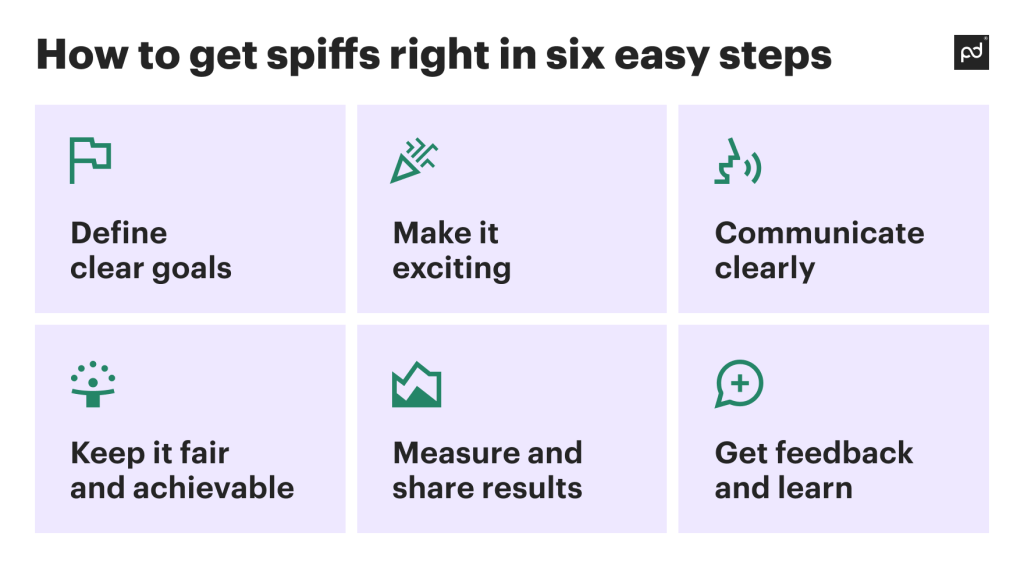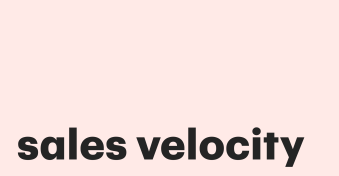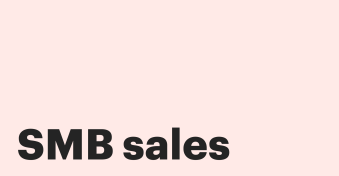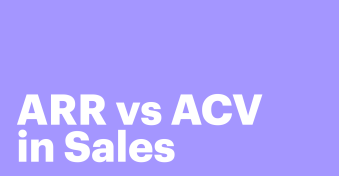Launching a new product can necessitate an overnight shift in objectives and strategy, which often damages morale and causes high staff turnover.
How do you hold onto your top salespeople and keep hitting those targets?
For many businesses, the answer lies in offering incentives like spiffs, spivs, or commission structures.
Key takeaways:
- Spiffs are a great way to reward staff for their hard work.
- You can offer anything from cash bonuses to physical gifts or experiences.
- Competitions can bring fun and games into your sales department.
- Spiffs can also boost team morale, accelerate short-term sales, and help you rapidly shift your sales strategy.
- Creating spiffs and automating payments is easy when you use PandaDoc.
What is a spiff in sales?
A spiff in sales is a strategy for motivating teams.
Essentially, it’s a special incentive offered to salespeople, usually above their usual commission or bonuses.
This could be anything from a cash bonus for selling a particular item to a reward for meeting a specific sales target or even non-monetary incentives like a paid vacation or fancy dinner.
While we’re on the subject, “spiff” doesn’t really stand for anything, although you may hear the common backronym “sales performance incentive funding formula” being used nonetheless.
“Sales spiffs are a great tool for incentivizing behaviors you want to see in your reps,” Nora Hanagan-Breen, Sr. Director of SMB Sales at PandaDoc, says.” “They also help to gamify the day-to-day job and keep your teams motivated and competitive.”
Nora offers some tips to make sales spiffs more effective:
- Think creatively: Choose behaviors that you aren’t already incentivizing with standard commission or bonuses. For example, give a prize to the rep who listens to the most calls that month.
- Build teamwork: Amp up the competition while fostering healthy collaboration and teamwork by putting certain teams against each other. For example, I ran a competition between our European sales teams vs our American sales teams based on things like sales sold of our newest product, CRM hygiene, etc.
- Prizes don’t always need money: People like to win things they wouldn’t normally buy for themselves or maybe even have access to, such as an executive dinner, a new lead source, etc.
Why spiffs are beneficial
So, now you know what they are, why should your business use spiffs?
Boosts short-term sales
One of the key benefits of using spiffs is their ability to boost short-term sales.
When a specific product needs pushing or your sales strategy has to quickly shift gears, spiffs act as a turbocharger for your sales engine.
They create a sense of urgency, usually leading to a spike in sales activity and closed deals.
Brings a product into the limelight
Sometimes, certain products need extra attention, either because they’re new, underperforming, or you ordered too many.
Implementing spiffs helps direct your sales team’s focus toward these products and gets them out the door much quicker.
Increases team morale
Let’s not forget the human element: spiffs are meant to be fun.
They’re like a game and can encourage friendly competition among your sales agents.
Plus, the recognition that comes with earning them can be as rewarding as the incentive itself, whether it’s for career progression or pure bragging rights.
Potential drawbacks of sales spiffs
We’d be remiss if we hyped up spiffs without also providing you with the reality of the downsides. Here are a few to keep in mind.
Short-term focus
While spiffs can boost immediate sales, there’s also the risk they can solely promote short-term gains. This could come at the expense of building long-term customer relationships and focusing on sustainable strategies.
Unhealthy competition
Spiffs have the potential to bring out a highly-competitive side to your sales team, which risks breaking them apart, rather than having them work together towards the same goal: more company sales.
Cost implications
Utilizing sales spiffs too often can have an adverse effect and end up costing you more in the long-run. Decreased motivation: Again, if used too often, sales people may feel less incentivized or motivated without the added bonus of a sales spiff dangling in front of them.
How do spiffs work?
To kick off a spiff program, management must first set a clear objective, such as selling a certain number of units of a particular product.
Sales reps are then informed about these targets and the rewards for achieving them.
As the sales team works toward these goals, their progress is tracked.
Once they hit these targets, the promised spiffs—whatever form they take—are awarded.
Types of sales spiffs
A spiff incentive can take a few different forms.
Here are some of the most common:
- Cash bonuses. A straightforward extra payment for hitting sales targets.
- Physical gifts. Items like electronics, luxury goods, or branded merchandise.
- Recognition. Public acknowledgment in the company, like being nominated as “Salesperson of the Month.“
- Special privileges. Perks like flexible working hours or a premium parking spot.
Is a sales spiff a bonus or a commission?
It’s not uncommon to be a little confused when it comes to spiffs, commission, and the differences between them, because they do share some similarities.
So, let’s break it down.
| Sales spiff | Commission | |
|---|---|---|
| Definition | A short-term incentive used to drive immediate sales results. | A longer-term incentive, often a percentage of the total sales value, given to professionals as part of their regular compensation for meeting or exceeding targets. |
| Duration | Usually short-term, ranging from a single day to a few months. | Normally long-term, often tied to regular sales periods, like monthly or quarterly. |
| Payment structure | Often a fixed amount per sale or unit or a lump sum/physical reward for meeting a specific target. | Usually, a percentage of the sales price or profit margin. This may be structured into multiple tiers. |
| Frequency of payouts | Payouts are made immediately after the goal is achieved or on a regular basis, such as weekly. | Payouts are typically made regularly, such as monthly or quarterly, after sales reports are finalized. |
| Measurement of “success” | Success may be measured by the number of units sold or, more commonly, the achievement of specific short-term goals. | Success is measured based on total sales volume or the revenue generated over a longer period. |
| Effect on sales strategy | Designed to motivate immediate action and focus on specific products or goals. Can create a quick boost in sales or encourage a specific behavior in a team, such as pushing a new or underperforming product. | Encourages consistent performance and relationship- building with clients over time. This aligns with broader sales strategies and long-term business objectives. |
| Flexibility | Highly flexible and can be rolled out or changed quickly to address immediate sales needs. | Less flexible. Usually part of a structured compensation plan and included in an employee’s contract. |
| Accounting treatment | Treated as a “business expense,” which is deducted from your company’s gross income before calculating taxable income. | Usually treated as payroll, which is part of your company’s cost structure, and isn’t deducted before calculating taxable income. |
| Tax implications | For the employee, cash spiffs are generally taxed as income. Where the reward is an item, its ‘fair market value’ (FMV) is used. | Commission is taxed as employee income in the same way as any other type of cash bonus. |
Spiff vs. comission
Choosing between sales spiffs and commission depends on what you hope to achieve in your business and how your sales team operates.
You might prefer sales spiffs for:
- Launching a new product. Say you’ve got this cool new product you’re launching. You want your team to push it and create hype within your industry. A spiff can be the perfect nudge to get them excited about selling it.
- Seasonal pushes. Imagine it’s the holiday season, and you want to boost sales of certain items. Offering something like a fun holiday can be a spiff bonus for your team, encouraging them to focus on seasonal products.
You might prefer commission for:
- Making a job offer more attractive. If you’re looking to hire new salespeople, offering a commission structure can be appealing. You’ll be able to attract the most motivated and experienced professionals who are confident in their abilities and more likely to bring in lots of sales.
- Encouraging long-term performance. Commission is also great for keeping your team focused on the big picture. They’re not just selling for today; they’re building relationships and making consistent sales over time. Having long-term rewards means your employees get a slice of the pie as your business grows.
Combining both for maximum impact
You don’t always have to pick just one—in fact, many businesses run both commission and spiff programs simultaneously.
For example, you could have a solid commission structure to keep your team consistently motivated.
Then, during special events or when launching new products, you could introduce spiffs as a fun extra bonus to boost sales of specific items.
Remember, what works best will vary based on your business model, the products or services you offer, and your sales team’s dynamic.
Why not experiment with both to see which is best for your goals?
How to get spiffs right in six easy steps

Step 1: Define clear goals
First things first, with a spiff sales incentive you’ve got to know what you’re aiming for.
What is it you want to achieve?
This could be selling a specific amount of a new product or boosting sales in a sluggish category.
Whatever your desired outcome, the spiff criteria must be clear and achievable.
You don’t want to set the bar so high that it feels impossible, but it should also be enough of a stretch to keep things exciting.
Step 2: Make it exciting
Spiffs should feel special, like a mini celebration.
You’re not just handing out extra tasks; you’re creating a fun challenge for everyone to participate in.
As for the prize? Maybe it’s a cash bonus, a fancy dinner, or tickets to a big game.
Whatever you go for, it should be something that gets your team talking and, more importantly, selling.
Consider what will light up their eyes and put an extra pep in their step.
Step 3: Communicate clearly
This one’s a no-brainer, but it’s so important that it’s still worth covering: you must ensure that everyone on your team understands the what, when, and how of your spiff.
Explain the rules, how to win, and what the rewards are.
Keep communication open and regular—this competition should be top of your sales meeting agenda.
You could host daily or weekly updates to keep the excitement going and let everyone know where they stand.
It’s like a race where everyone can see the finish line and knows exactly how to get there.
Step 4: Keep it fair and achievable
Nothing will raise spirits like a sense of unfairness.
Ensure your spiff is accessible to all your salespeople, not just your top performers.
Maybe set different levels of achievement so everyone has a shot at winning something.
Whether they’re a junior trainee or a veteran salesperson, you want to send the message that hard work is recognized and rewarded.
Step 5: Measure and share results
As your spiff is running, keep an eye on the numbers.
Are sales going up? How’s your team doing? Share these results with everyone.
Act like a sports commentator giving a play-by-play, keeping the energy high and everyone engaged.
When it’s all done, celebrate your team’s successes, big and small.
You want to show them that their efforts made a difference.
Step 6: Get feedback and learn
Once your spiff is over, don’t just move on.
Ask your employees what they thought about it. What worked? What didn’t?
This feedback is golden—you’ll learn what motivates your team and how to make your next spiff even better.
Best practices for sales spiff programs
Hosting a sales spiff for the first time will be a bit of a leap into the unknown.
If you’re looking for pointers, try following these best practices.
- Make sure your spiff is relevant. Your spiff should directly support your company’s broader objectives. Whether moving a new product or targeting a fresh market segment, it should align with your business’s goals.
- Offer relevant rewards. Understanding what motivates your team is crucial. A spiff doesn’t just have to be about offering money; the prize could also be paid time off, special recognition, a physical prize, or a unique experience.
- Keep your spiff program timely and relevant. Timing is everything. Launch your spiff when it will have the biggest impact, such as during a product launch or a traditionally slow sales period.
- Simplify tracking and reporting. Make it easy for your team to track their progress toward winning the spiff. Use straightforward metrics and provide a simple way for them to check their status. It shouldn’t be frustrating to participate.
- Promote healthy competition. Your spiff should foster a positive workplace environment. Celebrate achievements openly but also encourage teamwork and the sharing of sales training techniques among your staff. You want to avoid pitting them against each other and discourage practices such as ‘stealing’ sales.
- Clear communication. Be sure your team is on the same page about the specificities of the spiff up front to avoid any miscommunication or confusion down the line.
- Evaluating. After testing out a round or two of spiffs, look at the numbers to assess whether or not it was helpful to your big picture goals. Make any needed adjustments before implementing this tactic for the next go-around.
- Consequences for unethical behavior. Should you run into a situation where someone has acted unethically, been dishonest, or promoted a toxic work environment, act fast on addressing it so the problem doesn’t persist in the future and the act of spiff incentives remains a positive and healthy thing.
10 sales spiff ideas to motivate your team
Prizes are the raison d’être of the best sales spiff ideas.
Why not try one of these?
- Cash prizes. Straightforward and always appreciated, a cash bonus is a simple yet effective motivator.
- Paid time off. Offering extra days off as a reward can be a great way to acknowledge hard work and dedication.
- Membership of a special club. Create an exclusive club, like a “Millionaire’s Club,” for top performers, complete with luxury office perks (or even a home office makeover).
- A vacation. A fully paid vacation is another fantastic way to reward exceptional sales achievements.
- A day out. Alternatively, let winning employees choose an exciting experience, like tickets to a favorite sports event or an adrenaline-pumping activity like bungee jumping.
- A personal development course. You could also sponsor a course or workshop that aligns with their career goals to add a personal touch to your sales spiff.
- A gourmet dining experience. Dinner at a Michelin-star restaurant is a great sales spiff idea for food enthusiasts.
- The latest tech gadgets. Gifting the latest smartphone or tablet is another excellent idea for sales reps who love technology.
- A luxury car rental. Let your VIP employees cruise in style with a year-long luxury car rental.
- A charity donation in their name. Sometimes, the best gift is to make someone feel like they’re having a positive impact on the world.
Sales spiff examples that will engage your staff
Sales spiffs have been around for eons.
While they’ve evolved over time, the core idea remains the same: to motivate sales staff with exciting incentives.
A standout example is GM Motors’ “Sell a Car, Get a Check” initiative from the 1990s.
As part of this, salespeople received between $50 and $75 for each car they sold, provided they stayed with the same dealership for at least three years.
Imagine the excitement and motivation this program would have created (not to mention that GM Motors was better able to hold onto its best sales staff throughout this period).
In our digital age, this concept could easily translate to, say, a cash bonus for every five-star Google review a customer leaves, linking direct customer satisfaction to employee rewards.
The possibilities are endless—for example, if you’re in social media sales, you could offer a prize for sales reps who generate a specific number of leads through a post.
You could extend this program to your affiliate marketers to rapidly rack up an imposing social media presence.
It all comes down to the specific outbound sales strategies your business is pursuing.
Once you know your objectives, creating a spiff reward system is a walk in the park.
Spiff programs: potential problems and solutions
Of course, it’s not all sunshine and rainbows.
Here are some downsides to spiff programs—and how to resolve them.
Problem 1: unbalanced competition
One issue with spiffs is that they can create conflict in your workplace.
This often happens when the same top performers keep winning, which can demotivate other team members.
To avoid this, consider structuring your spiffs so they reward incremental improvements or set different achievement levels.
Problem 2: short-term focus over long-term goals
Spiffs can sometimes lead to a short-term sales push at the expense of developing long-term customer relationships.
To counteract this, you must align your spiff incentives with your wider strategic goals.
For example, you could offer spiffs for securing repeat business or rolling contracts.
Problem 3: complexity and misunderstanding
A complicated spiff program can lead to confusion and misunderstandings, which defeats the purpose of motivating your team.
So, keep your spiff straightforward. Make sure eligibility rules are clear and goals easily understandable.
Regular communication and an open-door policy for questions will help ensure everyone is on the same page.
Process payments faster with PandaDoc
To wrap up, spiffs are an effective tool to help sales leads get the most out of their workforce.
They provide a burst of motivation at the right time, meaning you can align short-term objectives with the bigger picture regarding your brand’s direction.
The reasons behind their effectiveness are simple: humans are competitive creatures, and we like to win at games.
So, working some healthy competition into your sales strategy is a proven way to get agents to think creatively and close more deals.
The good news is that creating a spiff program is simple when you use document workflow software like PandaDoc.
Firstly, you can quickly create spiff documents to share with the team.
From here, integrations with CRM software, like Salesforce and HubSpot, allow for real-time tracking and reporting of sales figures.
You can even set up payments to process instantly once certain goals are achieved.
This means our platform has you covered from beginning to end. Ready to see how you can reach new heights with sales spiff through PandaDoc? Schedule your demo today.
Frequently asked questions
-
There’s no one-size-fits-all answer. Every company has a different set of goals and a different team of salespeople who must hit those targets.
In general, though, a successful sales spiff will be achievable, contribute to long-term business growth, and genuinely excite your team.
-
“Spiv” stands for “sales performance incentive value” and is often used interchangeably with “spiff.” However, some companies use the former to refer more broadly to any kind of sales incentive, not just immediate or short-term rewards like spiffs.
Essentially, while all spiffs can be spivs, not all spivs are spiffs.
-
If you’re giving out spiffs, it’s important to know that these incentives are generally considered a business expense. This means you can deduct them when calculating your taxable income (though you should still keep itemized accounts).
On the flip side, for employees, spiffs are usually subject to income tax. Whether it’s a cash bonus or a physical item, the IRS generally views it as part of their taxable earnings.
Disclaimer
PandaDoc is not a law firm, or a substitute for an attorney or law firm. This page is not intended to and does not provide legal advice. Should you have legal questions on the validity of e-signatures or digital signatures and the enforceability thereof, please consult with an attorney or law firm. Use of PandaDoc services are governed by our Terms of Use and Privacy Policy.
Originally published May 9, 2024, updated February 28, 2025


